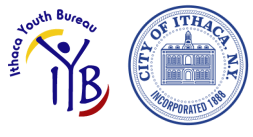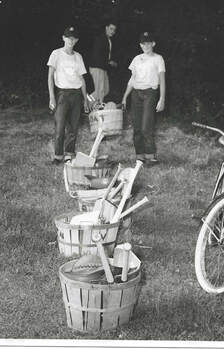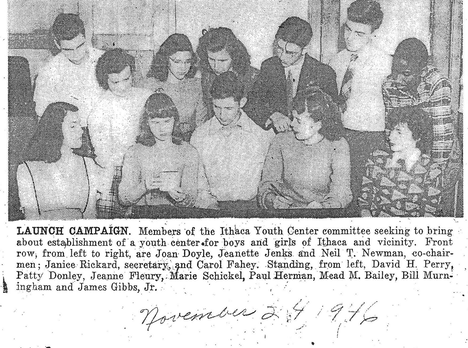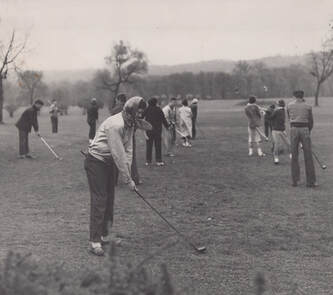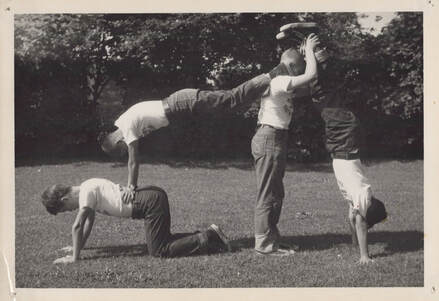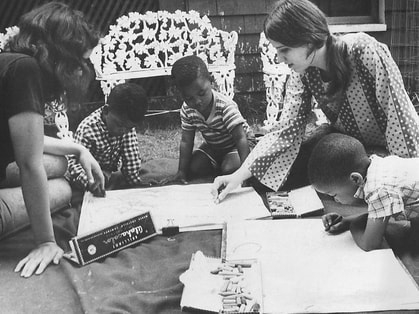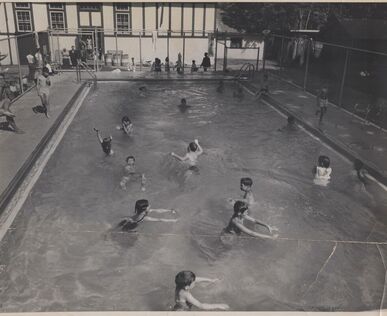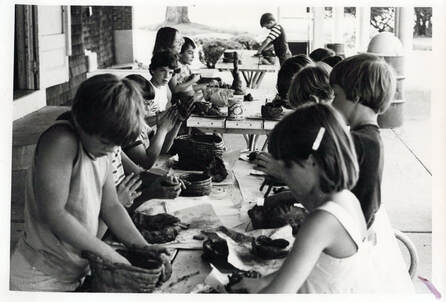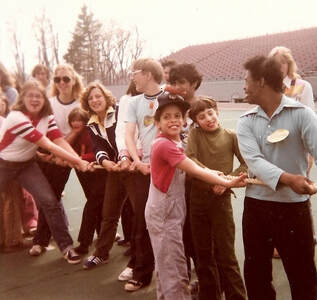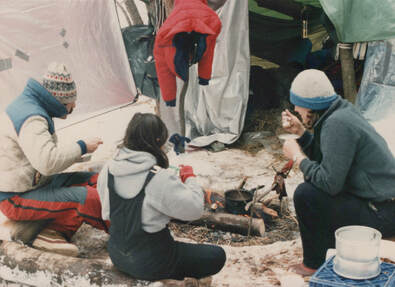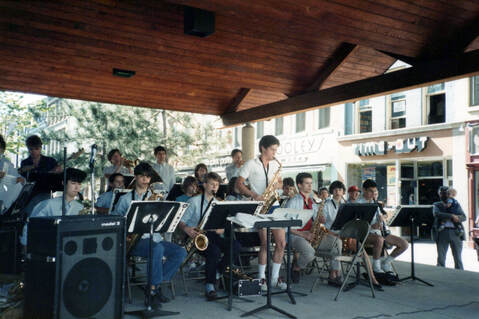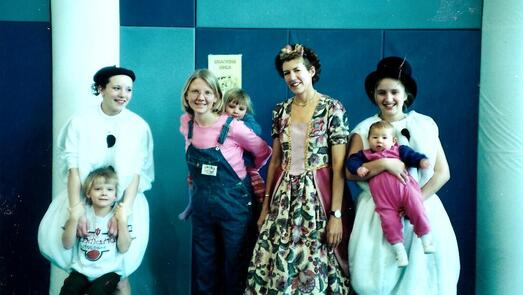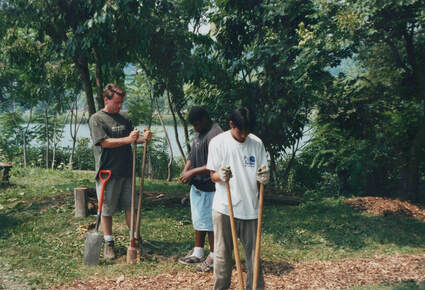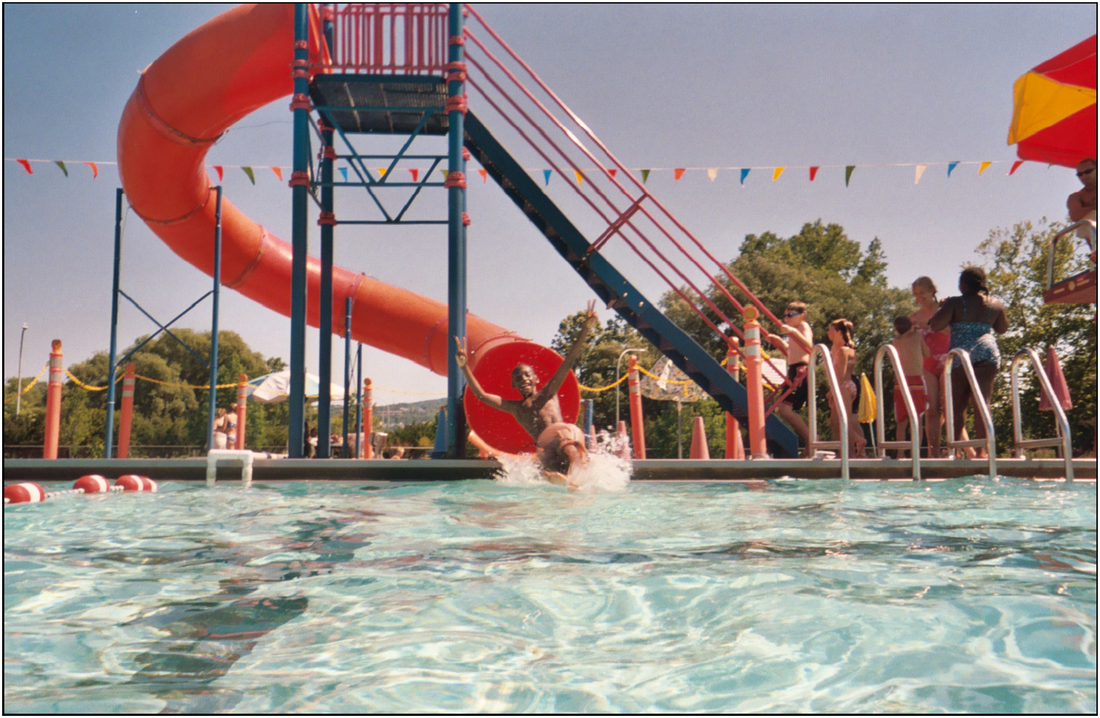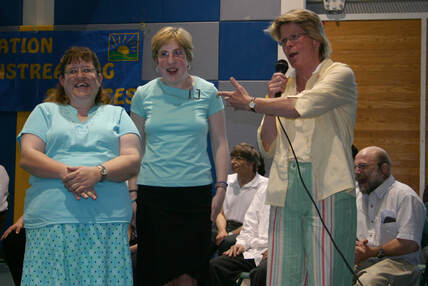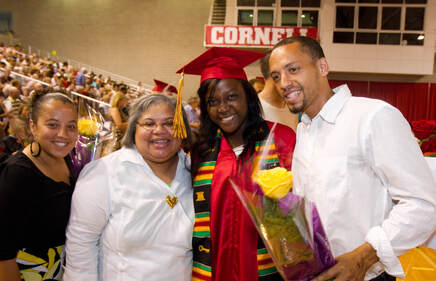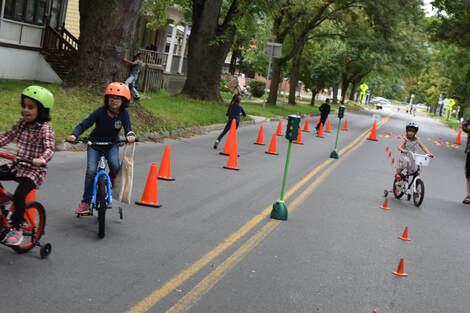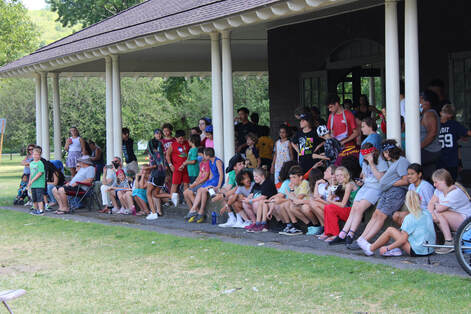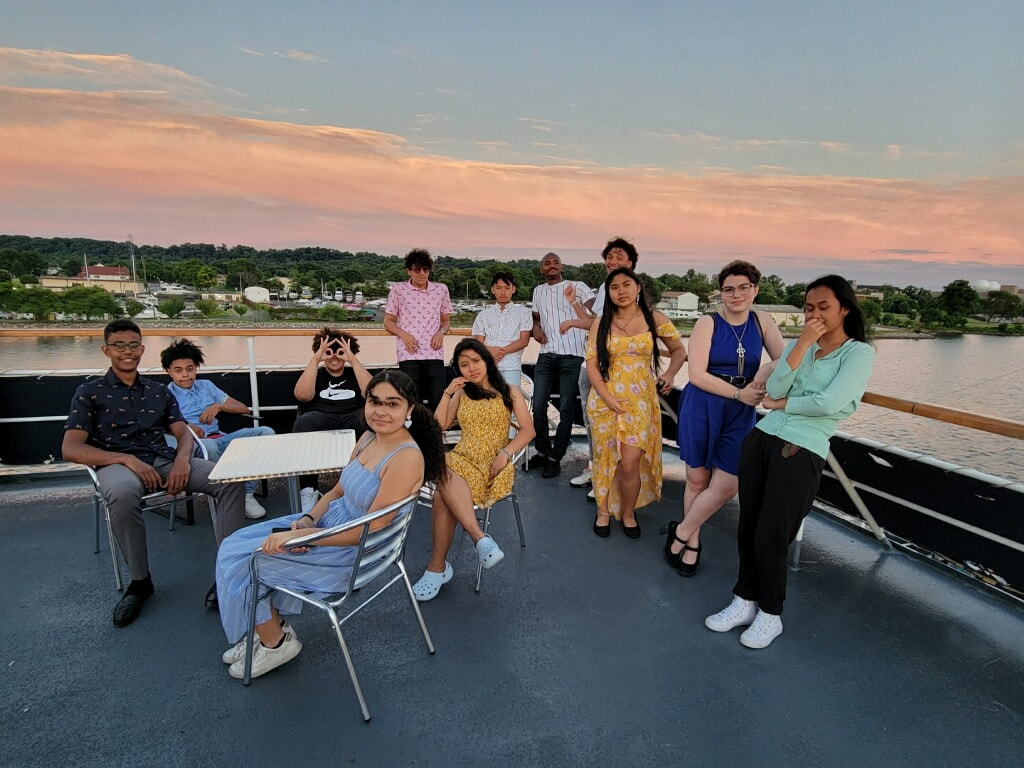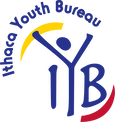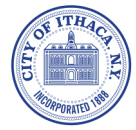1940s
In the 1940s, states began to recognize the needs of teens. They were concerned about the rise in juvenile delinquency, a term that is not often used today. According to a June 2003 article by Carol Kammen in the Ithaca Journal, in 1945, Gov. Thomas E. Dewey established a youth agency to “supplement and aid in coordinating the care and guidance furnished to young people by the family and existing religious and social institutions.” The legislation encouraged communities to increase activities for youth and offered matching funds to communities. Ithaca received $1,300, matched locally that funded the Kiwanis Baseball program that year.
1945 - The Kiwanis Baseball Program began with matching funds from the state.
1946 - 25 Ithaca teenagers formed The Ithaca Youth Center committee to establish a youth center for boys and girls of Ithaca and its vicinity.
1947-1948 - The Youth Bureau became a reality with a local focus on wholesome activities for teens and children.
March 13, 1948 - Edward Sebring Jr., director of physical education and coach from Trumansburg Central School, was appointed the first Youth Bureau Director.
July 22, 1948 - The Red Wagon, a portable stage that was taken to neighborhoods for singing events street dances, movies, and entertainment, was completed.
May 15, 1948 - The playground dedication of Northside House took place with performances, singers, square dancing, and Jack Deals on the Red Wagon.
May 20, 1948 - Percy Field (located where the current high school sits) opened and the first baseball and basketball clinics were held. Royner Greene and Joe Tatascore were part of this event.
1948 - Ithaca Girls formed a Recreation Club, sponsored by the Ithaca Youth Bureau
1949 - Small Fry Football involved 153 players. 2,000 spectators attended the first ball game on October 31, 1949.
1945 - The Kiwanis Baseball Program began with matching funds from the state.
1946 - 25 Ithaca teenagers formed The Ithaca Youth Center committee to establish a youth center for boys and girls of Ithaca and its vicinity.
1947-1948 - The Youth Bureau became a reality with a local focus on wholesome activities for teens and children.
March 13, 1948 - Edward Sebring Jr., director of physical education and coach from Trumansburg Central School, was appointed the first Youth Bureau Director.
July 22, 1948 - The Red Wagon, a portable stage that was taken to neighborhoods for singing events street dances, movies, and entertainment, was completed.
May 15, 1948 - The playground dedication of Northside House took place with performances, singers, square dancing, and Jack Deals on the Red Wagon.
May 20, 1948 - Percy Field (located where the current high school sits) opened and the first baseball and basketball clinics were held. Royner Greene and Joe Tatascore were part of this event.
1948 - Ithaca Girls formed a Recreation Club, sponsored by the Ithaca Youth Bureau
1949 - Small Fry Football involved 153 players. 2,000 spectators attended the first ball game on October 31, 1949.
1950s
1950 - Approximately 24,722 people benefitted from IYB programs like Ithaca Children’s Theatre, free golf instruction for junior and senior high students, the third season of the “Knot Hole Gang”, Red Wagon neighborhood series talent show and dance, the Stewart Park water safety and swimming program, and the Stewart Park Tennis project.
1953 - Ice Skating at Percy Field opened officially for the first time.
1953-1954 - Youth Bureau Leadership – the Director position was assumed on a temporary basis by Mr. Reed Snyder while a permanent replacement for Mr. Siebring was found. On August 1, 1954, Mr. Judson Hill was appointed.
1955 - The Music and Arts Day Camp began and was one of the YB’s most elaborate programs, providing 6 weeks of summer camp experience for any youth between the ages of 10 and 16.
1957 - The Children’s Théâtre Workshop was organized, providing instruction to 7th, 8th, and 9th graders in costuming, makeup, set design and construction, lighting, and acting.
1958 - Two baseball diamonds were laid out in Stewart Park and along with seven fields at the Bergholtz Tract became home to the Kiwanis Baseball program after Percy Field was no longer used. 938 boys participated in Kiwanis this year.
1953 - Ice Skating at Percy Field opened officially for the first time.
1953-1954 - Youth Bureau Leadership – the Director position was assumed on a temporary basis by Mr. Reed Snyder while a permanent replacement for Mr. Siebring was found. On August 1, 1954, Mr. Judson Hill was appointed.
1955 - The Music and Arts Day Camp began and was one of the YB’s most elaborate programs, providing 6 weeks of summer camp experience for any youth between the ages of 10 and 16.
1957 - The Children’s Théâtre Workshop was organized, providing instruction to 7th, 8th, and 9th graders in costuming, makeup, set design and construction, lighting, and acting.
1958 - Two baseball diamonds were laid out in Stewart Park and along with seven fields at the Bergholtz Tract became home to the Kiwanis Baseball program after Percy Field was no longer used. 938 boys participated in Kiwanis this year.
1960s
1961 - The Committee on Youth Problems worked to find employers who would hire youth who couldn’t find work because of a recent release from a penal institution, or unprepared drop-out from school. The Ithaca Police Department assigned a full-time Juvenile Officer to the staff. The Officer worked with the Youth Bureau taking an active part in youth functions in the community.
1962 - YB Programs flourished: Tompkins County Girls Softball, golf and tennis programs, Boy and Girl of the Month, Youth Court, Children’s Matinee Series, Street Dances, After School Recreation, Student Advisory Council, Senior Graduation Party, and Summer Wrestling Program.
1965 - Projects and programs to explore the need and interest of the arts began more intentionally. Mini Theatre performances, film series, workshops, and concerts were made available to the community free of charge.
1966 – Bob Cutia was named Director of the Youth Bureau.
1962 - YB Programs flourished: Tompkins County Girls Softball, golf and tennis programs, Boy and Girl of the Month, Youth Court, Children’s Matinee Series, Street Dances, After School Recreation, Student Advisory Council, Senior Graduation Party, and Summer Wrestling Program.
1965 - Projects and programs to explore the need and interest of the arts began more intentionally. Mini Theatre performances, film series, workshops, and concerts were made available to the community free of charge.
1966 – Bob Cutia was named Director of the Youth Bureau.
1970s
In the early ’70s, the city took advantage of Federal Funding from the Bureau of Outdoor Recreation and created the Cass Park swimming pool and ice skating rink complex, installing ball fields, tennis courts, and an inlet fitness trail nearby. This complex began operating under the auspices of the Youth Bureau in 1972. Cass Park was named for Leon H. Cass, the city civil engineer appointed in 1933 who supervised the development of West Hill subdivisions and was responsible for the formation of the park.
1972 - Cass Park Ice Rink was built with funding from the Bureau of Outdoor Recreation.
1972 - The Greater Ithaca Activities Center was created by a Greater Ithaca Recreation Council, formed to seek a more coordinate comprehensive approach with the community for the delivery of youth services – which at the time were perceived as primarily recreation. Organizers include the city Youth Bureau, Social Service League, the United Way, the YMCA, and the Ithaca City School District. The school district sold the city the building at Court and Albany Streets, and in 1974, GIAC staff became Civil Service employees under the auspices of the city Youth Bureau. GIAC still receives funding from United Way and operates with its own Board of Directors.
1973 - Cass Park Pool, Ithaca’s only public, outdoor, Olympic-Sized swimming pool opened.
1973 - The One-to-One program was initiated.
1974 - The Youth Bureau established its Youth Development Division with the mission of providing outreach and information counseling for at-risk youth, assistance to families in need of support with their children’s development; response to the needs of youth referred by the school and courts; programs to develop employment and social skills; and assistance in coordinating community resources that serve youth. Sam Cohen was the director of this program until 1988.
1975 - The Center for Expressive Arts was created, recognizing children’s interest in the arts. Ruth Davis was named the director of this new Youth Bureau program.
1976 - The Youth Bureau initiated a new branch of programming within the Recreation Division – devoted to adaptive recreation for children and adults with a range of disabilities. Special Programs later became Recreation Mainstreaming Services, and today is called Recreation Support Services.
1977 - New programs evolved: The Shop Program, Black Oak Knives, cutlery, The Mechanical All Stars, The Trails, Boats and Snowshoe program, and Dueling Banjoes.
1978 - Tin Can Fantasy Factory, a traveling summer improv theatre troupe that performed for children and families was established to bring live theatre to children in the community.
1972 - Cass Park Ice Rink was built with funding from the Bureau of Outdoor Recreation.
1972 - The Greater Ithaca Activities Center was created by a Greater Ithaca Recreation Council, formed to seek a more coordinate comprehensive approach with the community for the delivery of youth services – which at the time were perceived as primarily recreation. Organizers include the city Youth Bureau, Social Service League, the United Way, the YMCA, and the Ithaca City School District. The school district sold the city the building at Court and Albany Streets, and in 1974, GIAC staff became Civil Service employees under the auspices of the city Youth Bureau. GIAC still receives funding from United Way and operates with its own Board of Directors.
1973 - Cass Park Pool, Ithaca’s only public, outdoor, Olympic-Sized swimming pool opened.
1973 - The One-to-One program was initiated.
1974 - The Youth Bureau established its Youth Development Division with the mission of providing outreach and information counseling for at-risk youth, assistance to families in need of support with their children’s development; response to the needs of youth referred by the school and courts; programs to develop employment and social skills; and assistance in coordinating community resources that serve youth. Sam Cohen was the director of this program until 1988.
1975 - The Center for Expressive Arts was created, recognizing children’s interest in the arts. Ruth Davis was named the director of this new Youth Bureau program.
1976 - The Youth Bureau initiated a new branch of programming within the Recreation Division – devoted to adaptive recreation for children and adults with a range of disabilities. Special Programs later became Recreation Mainstreaming Services, and today is called Recreation Support Services.
1977 - New programs evolved: The Shop Program, Black Oak Knives, cutlery, The Mechanical All Stars, The Trails, Boats and Snowshoe program, and Dueling Banjoes.
1978 - Tin Can Fantasy Factory, a traveling summer improv theatre troupe that performed for children and families was established to bring live theatre to children in the community.
1980s
1982 - The YES Municipal Jobs Program (precursor to the YES Summer Jobs Program) hosted its first year of subsidized job placements.
1985 – The Tin Can building was demolished and a new home was planned for the Youth Bureau. Programming operated out of a temporary home in Clinton West Plaza for almost two years while the new Youth Bureau was being designed and built.
1987 - The new Youth Bureau opened and was named the Robert C. Cutia Community Services Building. Cutia led the Youth Bureau through two decades of development.
1987 - Youth Employment Service added the Transition To Work Program (subsidized youth employment for non-City residents of Tompkins County) 1988 - Sam Cohen, who was the director of the Youth Development Division, was named the new director of the Youth Bureau.
July 4, 1988 - John Doyle’s Water Carnival at Cass Park took place on July 4, 1988. The event included swimming through an obstacle course, water polo, a dunking booth, relay races, and more.
1989 - Paul Schreurs Memorial Program (PSMP) was formed in memory of Paul J. Schreurs, who died on March 15, 1986 while hiking at Buttermilk Falls State Park. Inspired by Eugene Lang, Paul dreamed of sending his “little brother” to college. Paul’s family was aware of his dream and set up the Paul Schreurs Memorial Fund through the Youth Bureau.
1985 – The Tin Can building was demolished and a new home was planned for the Youth Bureau. Programming operated out of a temporary home in Clinton West Plaza for almost two years while the new Youth Bureau was being designed and built.
1987 - The new Youth Bureau opened and was named the Robert C. Cutia Community Services Building. Cutia led the Youth Bureau through two decades of development.
1987 - Youth Employment Service added the Transition To Work Program (subsidized youth employment for non-City residents of Tompkins County) 1988 - Sam Cohen, who was the director of the Youth Development Division, was named the new director of the Youth Bureau.
July 4, 1988 - John Doyle’s Water Carnival at Cass Park took place on July 4, 1988. The event included swimming through an obstacle course, water polo, a dunking booth, relay races, and more.
1989 - Paul Schreurs Memorial Program (PSMP) was formed in memory of Paul J. Schreurs, who died on March 15, 1986 while hiking at Buttermilk Falls State Park. Inspired by Eugene Lang, Paul dreamed of sending his “little brother” to college. Paul’s family was aware of his dream and set up the Paul Schreurs Memorial Fund through the Youth Bureau.
1990s
1992 – George H. W. Bush declared the “One to One” program the 871st “Daily Point of Light”.
1994 - The Recreation Department entered into a two-year pilot Inter-Municipal Recreation Plan that included the City and towns of Ithaca and Enfield.
1995–1997 - The Youth Bureau and Beverly J Martin Elementary School formed a partnership to offer the BJM School Mentoring Program- A Model for School and Community Collaboration, a program that provided academic support. The Recess Computer Program and Northside Summer Reading Program were opportunities that evolved out of the BJM Mentoring program.
1998 - Tot Spot, a stay and play place for children ages 5 months and their grown-ups, opened in the IYB Gym for large motor activity during Ithaca’s coldest months. The Tot Spot program continues today!
1999 -
1994 - The Recreation Department entered into a two-year pilot Inter-Municipal Recreation Plan that included the City and towns of Ithaca and Enfield.
1995–1997 - The Youth Bureau and Beverly J Martin Elementary School formed a partnership to offer the BJM School Mentoring Program- A Model for School and Community Collaboration, a program that provided academic support. The Recess Computer Program and Northside Summer Reading Program were opportunities that evolved out of the BJM Mentoring program.
1998 - Tot Spot, a stay and play place for children ages 5 months and their grown-ups, opened in the IYB Gym for large motor activity during Ithaca’s coldest months. The Tot Spot program continues today!
1999 -
- Big Brothers Big Sisters became affiliated with the National Big Brothers Big Sisters of America Program
- The Mechanical All Stars transitioned to Computer All Stars.
- The 50/50 Youth Employment Program began with YES and TC Chamber of Commerce members.
2000s
2000 - Academic Plus at Beverly J Martin Elementary School is created. The program was modeled on extended day programs where elementary students stay after school for 1-2 hours to get additional academic support and enrichment.
2003 - YES initiated the summer Grow Your Own Teacher program with ICSD Summer School Teachers.
2006 - The College Discovery program (CDP) was created after the Youth Bureau received a three-year grant from the U.S. Department of Education.
2006 - The Tin Can Fantasy Factory won the New York State Recreation and Park Society Arts & Humanities Award
2006 - The IYB Recreation Department won the Publication Award for promotional brochures with the New York State Recreation and Park Society.
2007 – The Outings Program offered the Urban Rural Adventure Program to ICSD elementary students.
2008 – The IYB celebrated its 60th Anniversary with Cory Booker at the State Street Theatre.
2009 – Big Brothers Big Sisters won the National Agency Quality Service Award.
2009 - Mayor Carolyn Peterson swore in the first members of the newly reestablished Ithaca Youth Council, a self-directed group, with teens identifying and prioritizing issues and projects. The Youth Council has four main goals: to develop future leaders, to give formal voice to youth, to provide civic education, and to facilitate community contribution.
2003 - YES initiated the summer Grow Your Own Teacher program with ICSD Summer School Teachers.
2006 - The College Discovery program (CDP) was created after the Youth Bureau received a three-year grant from the U.S. Department of Education.
2006 - The Tin Can Fantasy Factory won the New York State Recreation and Park Society Arts & Humanities Award
2006 - The IYB Recreation Department won the Publication Award for promotional brochures with the New York State Recreation and Park Society.
2007 – The Outings Program offered the Urban Rural Adventure Program to ICSD elementary students.
2008 – The IYB celebrated its 60th Anniversary with Cory Booker at the State Street Theatre.
2009 – Big Brothers Big Sisters won the National Agency Quality Service Award.
2009 - Mayor Carolyn Peterson swore in the first members of the newly reestablished Ithaca Youth Council, a self-directed group, with teens identifying and prioritizing issues and projects. The Youth Council has four main goals: to develop future leaders, to give formal voice to youth, to provide civic education, and to facilitate community contribution.
2010s
2010 - The Ithaca Youth Council successfully worked with Barbara Lifton to secure a new 14-passenger van for the IYB.
2010 - Ithaca Youth Bureau received the NYS Recreation and Park Society Exceptional Program Award for Kids Marathon Mile Challenge. The Exceptional Program Award is presented to unique and innovative programs that enrich groups, communities, or individuals.
2011 - YES offered the TEACH program in conjunction with Ithaca College to encourage students of color to become teachers.
2011 - RSS staff, Rec Staff and Camp Directors won the Excellence of Service Award through the Tompkins County Mental Health Association for the summer camp inclusion program at Stewart Park Day Camp.
2012 - Outings began offering fee-based recreation programming like tree climbing and fire building.
2012 - Recreation Support Services and the Recreation Department were awarded the Diversity and Inclusion Award from the City of Ithaca for their summer camp inclusion program.
2012 – The Recreation Department won the New York State Recreation and Park Society Quality Youth Sport Award.
2014 – The Outings Program received a Safe Routes To School Grant and implemented the program with Fall Creek and Beverly J Martin Elementary Schools.
2015 - IYB launched Community Mentor Challenge, aiming to recruit 100 new mentors and raise $10,000.
2016 – The IYB joined GIAC and other organizations to participate in the My Brother’s Keeper Initiative, founded by The Obama Foundation to address the persistent opportunity gaps boys and young men of color face and to ensure all young people can reach their full potential.
2016 – Outings established the Pathfinders program for 4th & 5th graders in the ICSD.
2017 - YES partnered with the Joint Youth Commission to offer expanded summer job opportunities to teens living in the inner-ring municipalities of Tompkins County.
2017 - Ithaca Bike Rental opened and took the place of Computer All-Stars.
2018 - The Ithaca Youth Council moved under the coordination of the YES program and members were called Youth Council Ambassadors.
2019 – Big Brothers Big Sisters again won the National Agency Quality Service Award.
2010 - Ithaca Youth Bureau received the NYS Recreation and Park Society Exceptional Program Award for Kids Marathon Mile Challenge. The Exceptional Program Award is presented to unique and innovative programs that enrich groups, communities, or individuals.
2011 - YES offered the TEACH program in conjunction with Ithaca College to encourage students of color to become teachers.
2011 - RSS staff, Rec Staff and Camp Directors won the Excellence of Service Award through the Tompkins County Mental Health Association for the summer camp inclusion program at Stewart Park Day Camp.
2012 - Outings began offering fee-based recreation programming like tree climbing and fire building.
2012 - Recreation Support Services and the Recreation Department were awarded the Diversity and Inclusion Award from the City of Ithaca for their summer camp inclusion program.
2012 – The Recreation Department won the New York State Recreation and Park Society Quality Youth Sport Award.
2014 – The Outings Program received a Safe Routes To School Grant and implemented the program with Fall Creek and Beverly J Martin Elementary Schools.
2015 - IYB launched Community Mentor Challenge, aiming to recruit 100 new mentors and raise $10,000.
2016 – The IYB joined GIAC and other organizations to participate in the My Brother’s Keeper Initiative, founded by The Obama Foundation to address the persistent opportunity gaps boys and young men of color face and to ensure all young people can reach their full potential.
2016 – Outings established the Pathfinders program for 4th & 5th graders in the ICSD.
2017 - YES partnered with the Joint Youth Commission to offer expanded summer job opportunities to teens living in the inner-ring municipalities of Tompkins County.
2017 - Ithaca Bike Rental opened and took the place of Computer All-Stars.
2018 - The Ithaca Youth Council moved under the coordination of the YES program and members were called Youth Council Ambassadors.
2019 – Big Brothers Big Sisters again won the National Agency Quality Service Award.
2020s
2020 - IYB staff were furloughed due to COVID; spring and summer programs were cancelled.
2020 – IYB responds to COVID with programming:
2023 - The Ithaca Youth Bureau updated its Mission and Diversity, Equity, and Inclusion Statements.
2020 – IYB responds to COVID with programming:
- YES launched LEVELup, an online course designed for teens to learn pre-employment skills.
- IBR opened for the community with a non-contact registration process.
- RSS found success and accessibility with virtual programming.
- The Recreation Department offered small, in-person programs.
2023 - The Ithaca Youth Bureau updated its Mission and Diversity, Equity, and Inclusion Statements.
